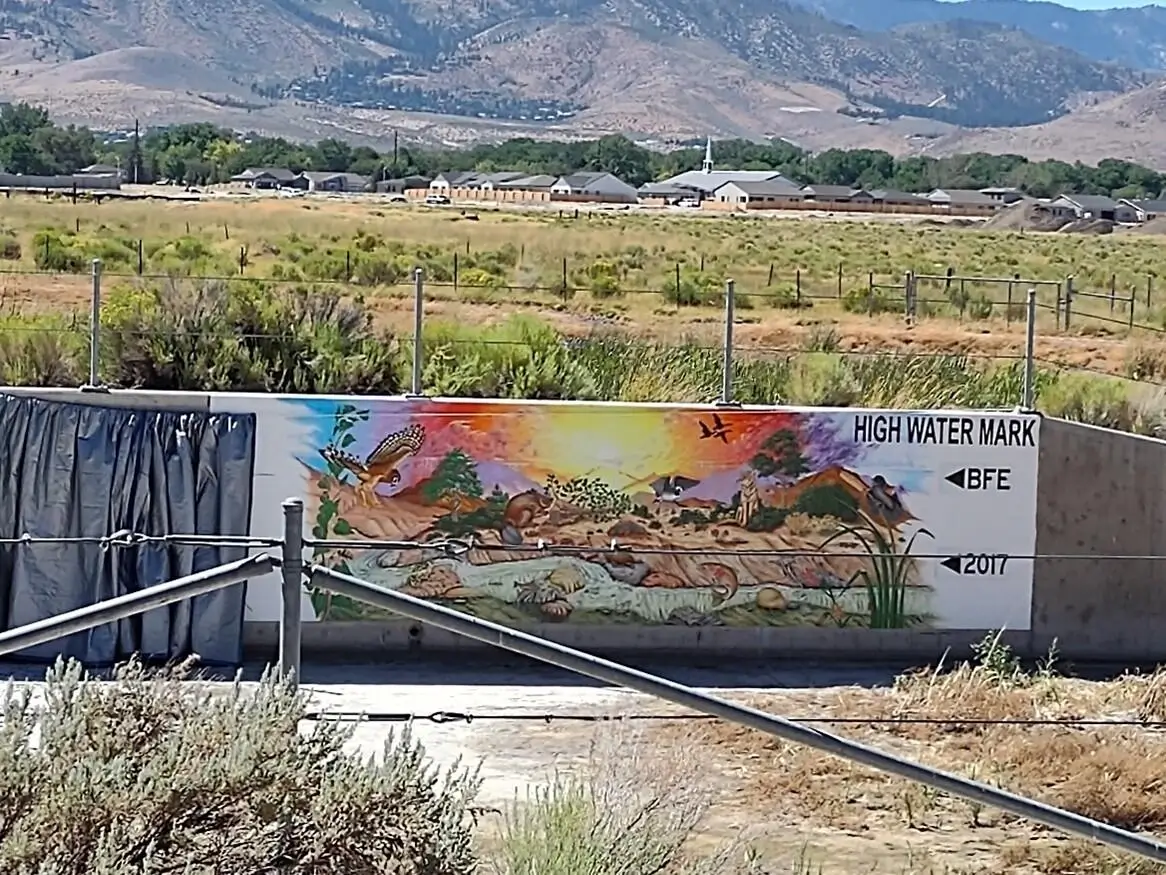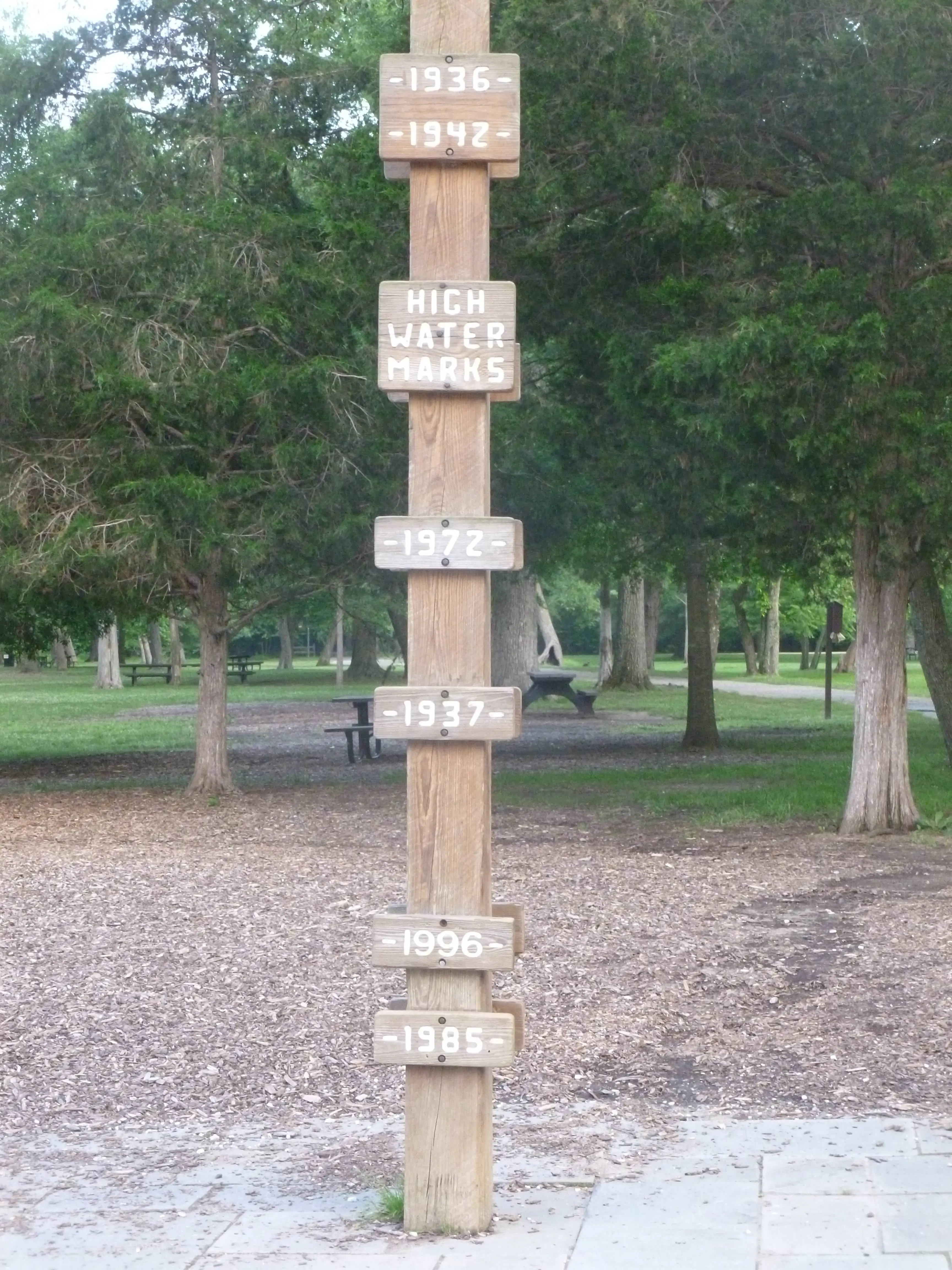
FLOOD BASICS
How to Prepare
Many people who live in an area that could be flooded are unaware of the potential impacts they could face. It is important to know if you are in a flood zone.
To start, learn about the types of flooding that can impact your home and community. Types of flooding include flash floods, river floods, storm surges, coastal floods, burn scars, debris flows, ice/debris jams, snowmelt, dry wash, dam breaks, and levee failures. See the “About Flooding” and “Flood Mitigation” pages to learn more.
Often, longstanding community members recall historic flooding and can be a resource when trying to understand the types of floods that occurred in the past. Community records can also be used to piece together past flooding. While past floods are a good indicator for the future, it’s important to remember that flood risks can change over time.
High water marks tell the story of past floods
Many communities have experienced multiple floods over time. Signs or other visual indicators are often placed in prominent places in these communities to help those living in or visiting the area understand past flooding and remember that it could happen again.
Image Left: High Water Mark - Carson City, NV
Image Right: High Water Mark - Potomac River, Great Falls, VA


Figure out if your home and community are in a flood zone. FEMA’s flood map service center provides tools to help people see if their home is in an area prone to flooding.
Additional private tools exist that can help property renters and owners understand flooding that can occur near them. In addition, structures that have experienced flooding often have tells – such as water lines in basements or crawl spaces, or musty smells near recently repaired areas.
Reach out to local officials for advice, such as floodplain or emergency management staff. Many are already familiar with flooding and planned notification and evacuation routes should flooding occur.
Know What You’ll Do When Flooding Occurs
There are several actions you can take, regardless of location, to be better prepared before, during, and after a flood.
BEFORE a Flood
- Prepare an emergency kit and make a plan for your household.
- Identify important items to move to an upper floor in your home or store in a floodproof container.
- Sign up for local emergency alerts.
- Learn about the weather conditions that can lead to flooding in your area.
- Learn local flood evacuation routes.
- Consider if flood insurance is right for you.
DURING a Flood
- Move immediately to higher ground.
- Do not walk, swim, or drive through flood waters.
- Always listen to local authorities and safety officials.
- Evacuate if instructed to do so.
AFTER a Flood
- Stay away from flood water as much as possible. It could be contaminated with dangerous substances or there could be debris or downed power lines.
- Do not attempt to walk, swim, or drive through moving water, as it can be dangerous.
Visit Ready.gov for more general information and tips for preparing for a flood.
Know Who is Responsible for Infrastructure in your Area
Dams and levees in the U.S. are managed by a variety of entities, including private companies and federal, state, local, and tribal governments. These structures help reduce the frequency and intensity of flooding in communities throughout the U.S., but no dam or levee is risk free.
Those responsible for dams and levees work to ensure they remain in good condition and share this information with local community officials, so they are aware of any trouble spots and account for dam and levee related flooding in community planning. In addition, most dams and levees have a structure-specific plan in the event of an emergency and practice these with local partners.
To find information about dams or levees near you, visit the National Inventory of Dams or the National Levee Database. In addition, community floodplain and emergency managers can advise on any additional measures to take in advance of flooding in these areas.
Know Where to Go for Up-to-Date Information
Conditions can rapidly change during a flood event. There are a few resources to rely upon for current information about flooding.
Local officials will advise community members on when they may need to leave an area that may flood. In some cases, this may be done by going door to door, sounding a siren in areas that may flood, or other similar options.
In some cases, Wireless Emergency Alerts (WEAs) may be used. These are short emergency alerts authorities can send to any WEA-enabled mobile device in a locally targeted area.
The Emergency Alert System (EAS) is a national public warning system that allows authorized federal, state, local, tribal and territorial alerting authorities to deliver important emergency information such as weather information targeted to specific areas.
NOAA Weather Radio All Hazards (NWR) is a nationwide network of radio stations that broadcast continuous weather information from the nearest National Weather Service office based on your physical location.
The Integrated Public Alert and Warning System (IPAWS) is FEMA’s national system for local alerting. It gives federal, state, local, tribal, and territorial public safety agencies the ability to send WEAs, EAS alerts, weather and non-weather-related emergency messages simultaneously through NOAA weather radios, and alerts through systems like sirens and digital billboards.
The FEMA App allows you to receive real-time weather and emergency alerts, send notifications to loved ones, locate emergency shelters in your area, get preparedness strategies and more.
Community officials remain the best resource for knowing when to go, where to go, and how long you may need to stay away. If you have questions about emergency notification procedures in your area, contact your local emergency manager.
Before flooding occurs, it’s also important to plan how you will communicate with family members. Landline and cellular phone systems are often overwhelmed following a disaster, so you may need to use text messaging or social media to communicate with family and friends. For more information, including a sample household communications plan, visit www.ready.gov/make-a-plan.